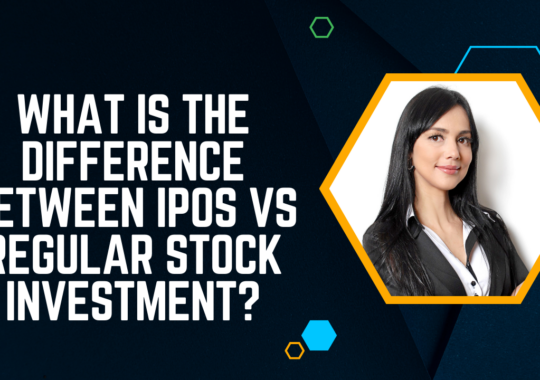When it comes to analysis of the financial markets and planning trades, there are two general approaches, technical and fundamental. Fundamental analysts study economic and political events such as interest rate decisions, trade balance, unemployment data, elections and policies. Technical traders study how the markets have performed in the past and base their analysis on historical chart data.
In technical analysis, chart and candlestick patterns play a major role. Technical analysis includes technical indicators, patterns, support and resistance and psychological (round price numbers that) levels.
Types of chart patterns
There are two types of chart patterns: continuation and reversal. Continuation patterns help trends continue, and reversal patterns predict price reversals. There are bullish and bearish patterns. Bullish patterns predict that prices will increase, and bearish patterns predict price drops. When reading about reversal and continuation patterns explained in trading, it’s important to note that patterns give you great risk to reward ratios. But the predictions do not always come true. And therefore, traders should always use risk management strategies. The idea is to have enough winning trades to cover the losses and grow the account step by step.
Candlestick patterns
The Candlestick charting option is the most popular method in financial trading. Candlesticks are superior in delivering information in the most efficient way possible. A candle consists of open, close, maximum and minimum price points in a given timeframe. The candlesticks give traders a visual picture of the battle between bulls and bears. As a result, traders and analysts have discovered an extensive number of patterns that tend to repeat from time to time. There are continuation, reversal and indecision candlestick patterns. We’ve already mentioned the continuation and reversal definition, and the same is true in the candlestick’s case. As for the indecision patterns, when they form, they indicate that price can go in any direction.
Why are patterns important?
Every pattern plays a role in trading. Even patterns that show induction and predict that price may go in any direction, can be profitable. In case you’re wondering how that’s even possible, the answer is simple, usually indecision patterns give traders great risk to reward ratios.
Patterns are essential because they make trading easier for technical traders. They give great risk to reward ratios, give clear entry and stop loss points, and help join existing or new trends. Things that have happened many times before, might happen again in the future. At least there’s a good probability. And successful trading is never based on certainty, but always on probabilities.
There’s no clear answer to why patterns work. Some believe that they work because of the psychology of masses. Market reacts to certain price changes similarly, due to human nature. Others think that patterns work because people think they work and avoid placing orders against well-defined patterns. If that’s the case, patterns might be nothing more than self-fulfilling prophecies. However, the most important thing for any trader is to make money. If patterns work for a technical trader, it’s a good enough reason to keep using them.
How to trade patterns?
In order to trade the patterns the right way, it’s essential to always wait for the right moment. Many novice traders finish patterns in their imagination and open trades while it’s still unfinished. And later find themselves in a difficult position. Keep in mind that a pattern is ready to trade when it shows entry. Each pattern has its entries and exits. And in many cases, Stop Loss and Take Profit targets are obvious. However, traders are not always given take profit targets as in many occasions, TP is unclear. For instance, in case you use a continuation pattern to join a trend, you want to stay in the trend as long as the market gives you the opportunity to maximize your returns.
Patterns can be used in combination with other indicators and various trading strategies. Using various tools can enhance your trading, however, keep in mind that too many tools can cause analysis paralysis and make decision-making more complex. Analysis paralysis happens when one indicator tells you to buy, the other tells you to sell, and you become unable to do any. Trading should be simple and not too complicated.
Shortcomings of trading using patterns
The criticism of trading patterns is coming from the same people that criticizes technical analysis. The biggest flaw that technical trading has is that it is distant from economic and market news. As a result, most technical traders avoid trading before or during major economic announcements. Patterns do not take into account fundamental data, which is why it’s best to always keep an eye on the economic calendar.
Moreover, there are various asset classes and asset types, patterns that work for certain markets might fail to work on others. For instance, the stock market and FX market move very differently. Stocks can drop to zero or potentially grow to the moon, whereas FX pairs have a more cyclical nature. Base currencies are valued in relation to their quote currencies. Even the way major, minor and exotic pairs move differently. Therefore, patterns can not work similarly to all the time, and that complicates the process. It’s best to backtest your trading strategies before going live to make sure that your trading will be profitable.
In addition, patterns are less effective in noisy market conditions. Therefore, traders trade patterns using higher than 1 hour candlesticks time frames. The higher the time frames, the less market noise.
Moreover, certain patterns might stop working overtime or develop new ones. Markets are never static. They keep evolving, and traders need to keep evolving too. The Internet and modern technology have changed the lives of floor traders. Consequently, the patterns that were relative at the time became useless. Nowadays, the market is also changing due to the increasing number of automatic trading. Robots do not share human emotions. They don’t feel greed, fear, sickness, or the urge to overtrade. Robots (also known as trading algorithms) are contributing to creating new trading patterns.

Krishna Murthy is the senior publisher at Trickyfinance. Krishna Murthy was one of the brilliant students during his college days. He completed his education in MBA (Master of Business Administration), and he is currently managing the all workload for sharing the best banking information over the internet. The main purpose of starting Tricky Finance is to provide all the precious information related to businesses and the banks to his readers.




